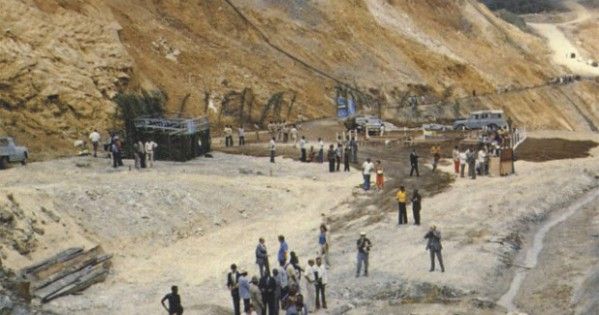
In 1972 in Oklo, Africa, a team of scientists found that the Uranium rich area was actually home to an advanced subterranean nuclear reactor.
Researchers claim that the ancient nuclear reactor is 1.8 billion years old and operated for 500,000 years in the past.
The result of this find were made public during a press conference with the International Atomic Energy Agency (IAEA).

BYPASS THE CENSORS
Sign up to get unfiltered news delivered straight to your inbox.
You can unsubscribe any time. By subscribing you agree to our Terms of Use
Secretsofthefed.com reports:
Incredibly, compared with this huge nuclear reactor, our modern-day nuclear reactors are really not comparable both in design and functionality. According to studies, this ancient nuclear reactor was several kilometers long. Interestingly, for a large nuclear reactor like this, thermal impact towards the environment was limited to just 40 meters on all sides. What researchers found even more astonishing, are the radioactive wastes that have still not moved outside the limits of the site as they are still held in place tanks to the geology of the area.
What is surprising is that a nuclear reaction had occurred in a way that the plutonium, the by-product, was created and the nuclear reaction itself had been moderated something considered as a “holy grail” for atomic science. The ability to moderate the reaction means that once the reaction was initiated, it was possible to leverage the output power in a controlled way, with the ability to prevent catastrophic explosions or the release of the energy at a single time.
Researchers have dubbed the Nuclear Reactor at Oklo as a “natural Nuclear Reactor”, but the truth about it goes far beyond our normal understanding. Some of the researchers that participated in the testing of the Nuclear reactor concluded that the minerals had been enriched in the distant past, around 1.8 billion years ago, to spontaneously produce a chain reaction. They also concluded that water had been used to moderate the reaction in the same way that the modern nuclear reactors cool down using graphite-cadium shafts preventing the reactor from going into critical state and exploding. All of this, “in nature”.
However, Dr. Glenn T. Seaborg, former head of the United States Atomic Energy Commission and Nobel Prize winner for his work in the synthesis of heavy elements, pointed out that for uranium to “burn” in a reaction, conditions must be exactly right. For example, the water involved in the nuclear reaction must be extremely pure. Even a few parts per million of contaminant will “poison” the reaction, bringing it to a halt. The problem is that no water that pure exists naturally anywhere in the world.
Several specialists talked about the incredible Nuclear Reactor at Oklo, stating that at no time in the geologically estimated history of the Oklo deposits was the uranium sufficiently rich Uranium 235 for a natural nuclear reaction to occur. When these deposits were formed in the distant past, due to the slowness of the radioactive decay of U-235, the fissionable material would have constituted only 3 percent of the total deposits – something too low mathematically speaking for a nuclear reaction to take place. However, a reaction took place mysteriously, suggesting that the original uranium was far richer in Uranium 235 than that in a natural formation.

This is explained a lot better here. https://www.youtube.com/watch?v=yS53AA_WaUk
This is explained a lot better here.
This story sucks.
This story sucks.